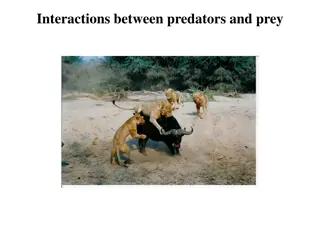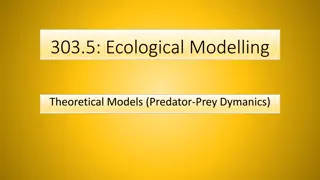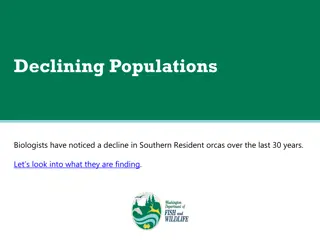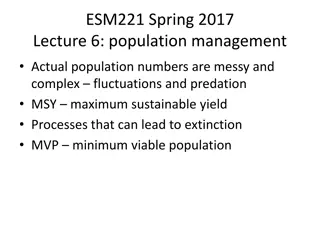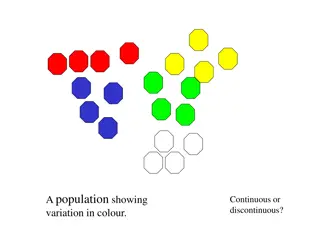Understanding Predator-Prey Population Cycles: Analysis and Insights
Explore the dynamics of predator-prey population cycles through mathematical models, linearization techniques, sensitivity testing, and conclusions on the role of maturation delay in shaping cycle periods and relationships between species.
- Predator-prey dynamics
- Population cycles
- Maturation delay
- Linearization techniques
- Sensitivity testing
Download Presentation

Please find below an Image/Link to download the presentation.
The content on the website is provided AS IS for your information and personal use only. It may not be sold, licensed, or shared on other websites without obtaining consent from the author. Download presentation by click this link. If you encounter any issues during the download, it is possible that the publisher has removed the file from their server.
E N D
Presentation Transcript
Predator-Prey Population Cycles Jack Sinclair & Shane Moore
Linearization of the Lemming-Stoat Model Linearize at ten years (t=10) and the fixed point (lemming,stoat)=(x,y)=(10- 1,10-2.5) Complex eigenvalues and is therefore periodic
Find Eigenvalues The point (x,y)=(10-1,10-2.5) with t=10 produces the following Jacobian Matrix Which yield the complex eigenvalues: {-1.5855 - 13.0678 , -1.5855 + 13.0678 }
Sensitivity Testing - Individually increase and decrease each parameter to see its effect on cycle period. - Bifurcation value (? = 0.2) for maturation delay.
Additional Predator-Prey Systems Hare-lynx system Similar system of differential equations Only parameter for maturation delay remained significant Maturation delay value (? = 1.5) Moose-wolf system Wolf maturation delay time of 1.8 years estimates a 38 year population cycle period. Falls in line with past estimates and observations.
Bifurcation - Threshold values of maturation delay which differ for each predator-prey system. - No population cycles in cases a, c, and d. - Periodic populations in case b.
Conclusion - Oscillating population cycles corroborated through an analysis of the linearized system. - Maturation delay of the predator species is a key determinant for period lengths of population cycles. - Bifurcation values of the maturation delay parameter signal changes in the predator-prey population relationship.











